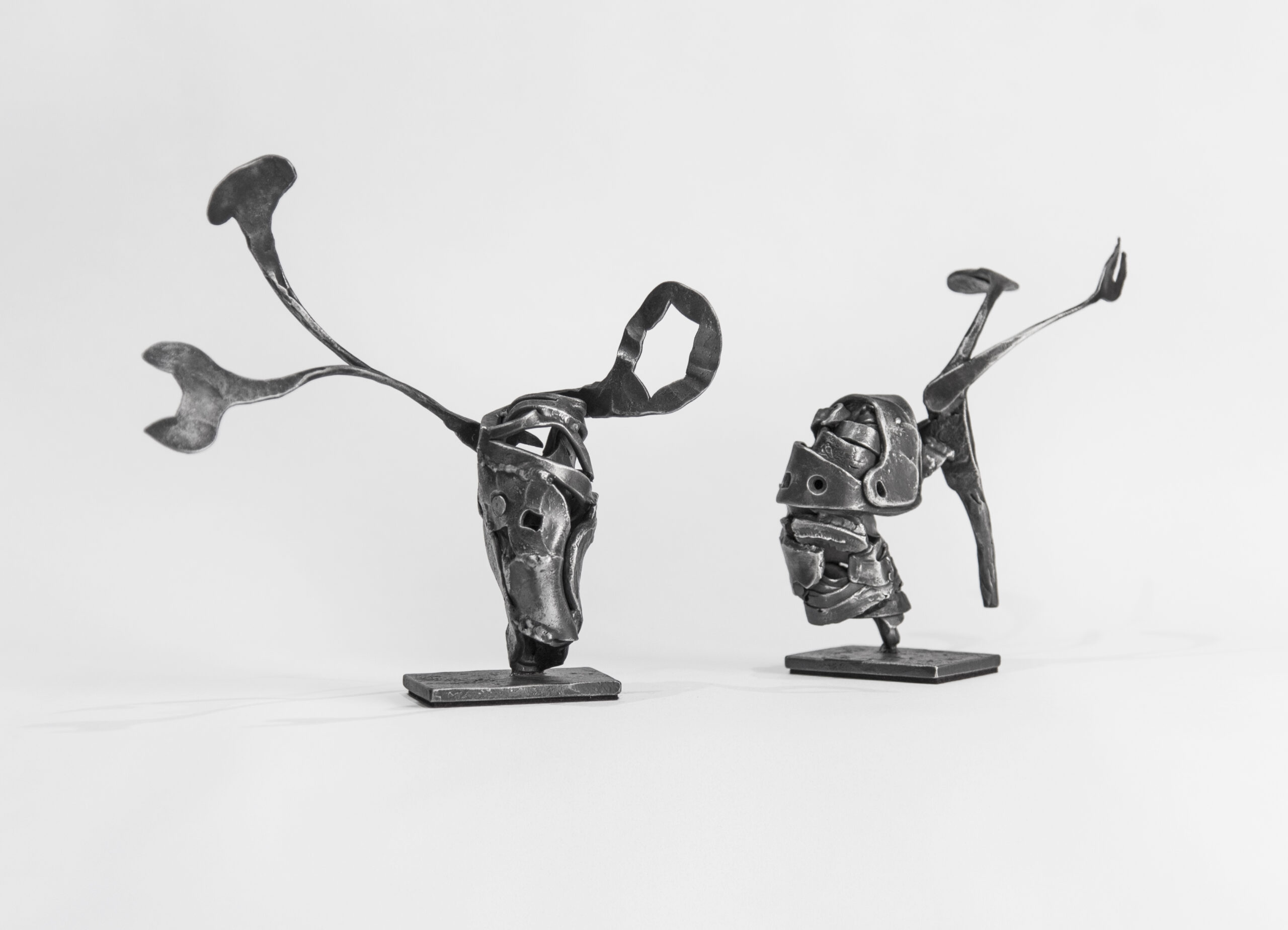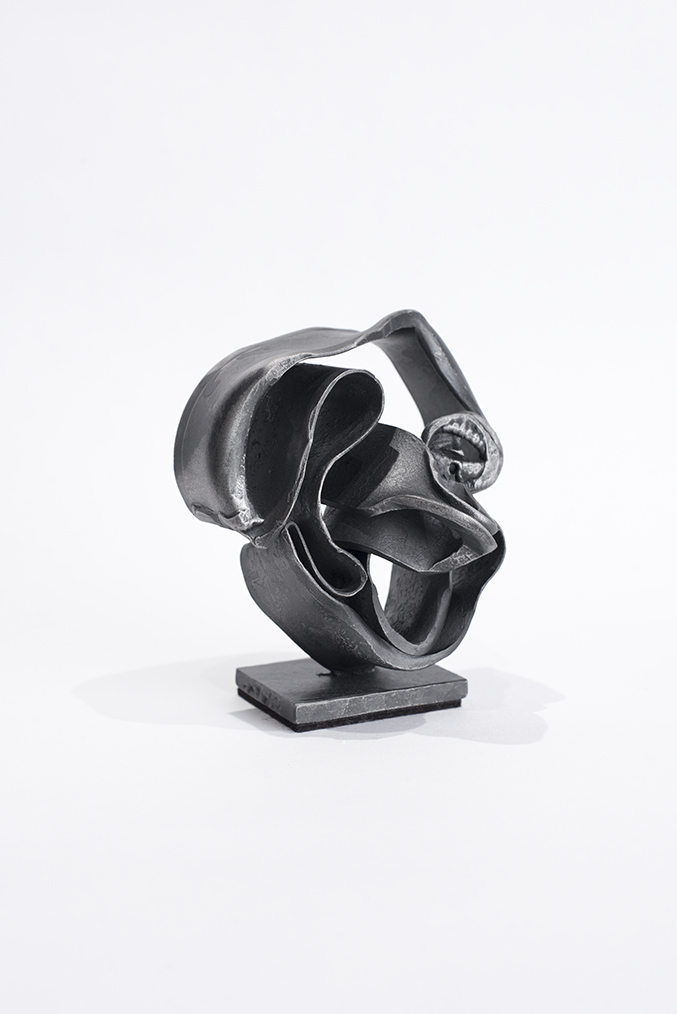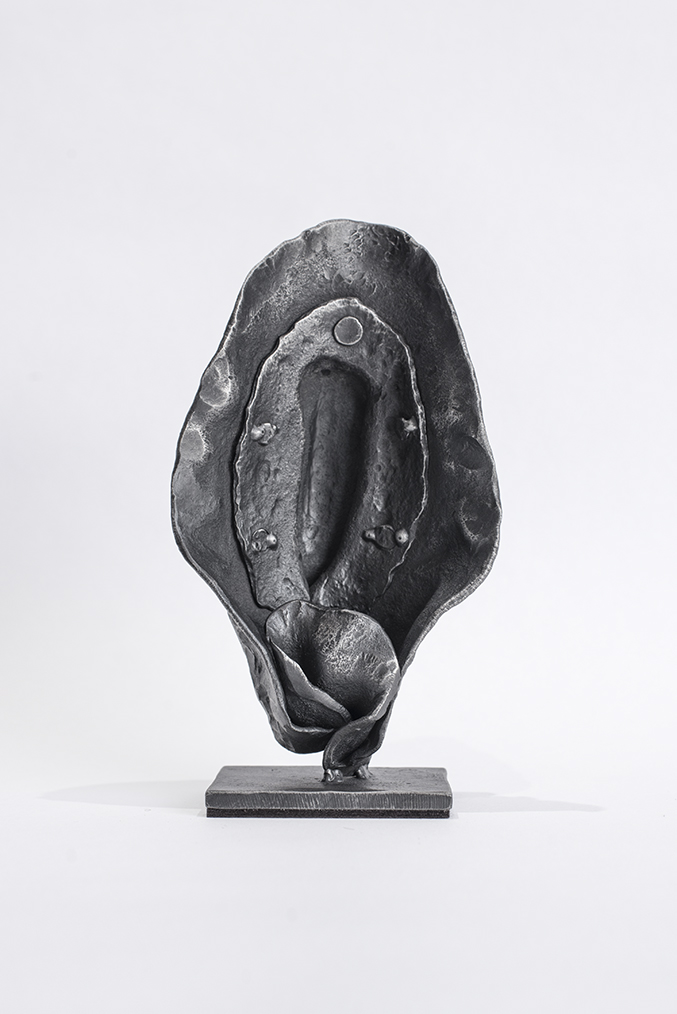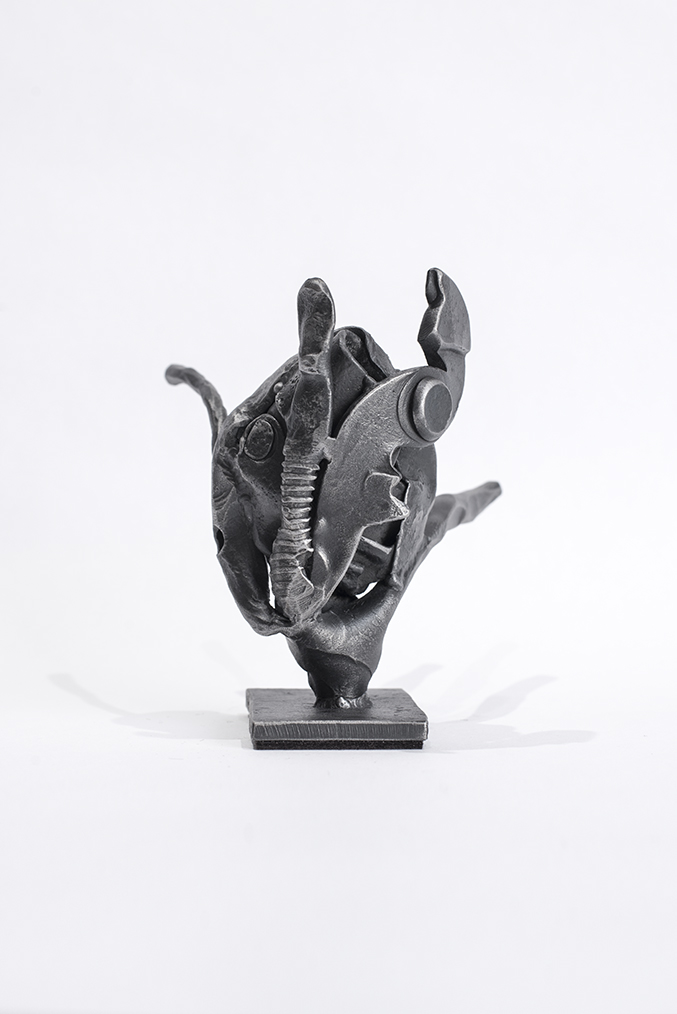
「こうしなさい」「こうなりなさい」と押し付けるのではなく、自らが進んでいく方向を見守り、適度にサポートする。…子育ての話ではありません。
鉄の話です。新作”MASK”。
今回も古道具を熱して叩いて。長くこの手法で制作を続けてきたので、どのみちコッチの思い通りの形にはならないというのはよく理解しています。なので金槌を振る時は、鉄に対して「こうなりなさい」ではなく、「どうなっていくのか」に目を凝らします。すると時々、何か顔のようなイメージが芽生える機会が訪れます。そのタイミングで、スッとイメージを助ける要素を込める。ただし手を加えすぎると、鉄自身がなりたがっていた形を台無しにしてしまうので要注意。
ちょっとデリケートな場面を経て、仮面のようなフォルムへ。熱した痕跡、叩いた痕跡、削った痕跡、溶接の痕跡。いろいろな痕跡が、その表情を豊かにしてくれます。暖かくも冷たくもなれる振り幅の広さは、鉄素材の魅力的なところですね。
MASK

Rather than forcing them to “do this” or “be this way,” we watch over them and support them in moderation as they move forward on their own. I am not talking about child-rearing.
It’s about iron. New work “MASK”.
Again, I heated and hit the old tools. Since I have been working with this method for a long time, I understand that it will not turn out the way I want it to anyway. Therefore, when I swing the hammer, I do not say to the iron, “It should be,” but rather, “How will it turn out?” Then, from time to time, an opportunity will present itself where an image of something might sprout. At that moment, you can put in the elements that will help the swooping image. Be careful, however, because if you make too many alterations, you will ruin the form that the iron itself wanted to become. It is delicate work.
Traces of heat, of hitting, of scraping, of welding. Various traces enrich the expression of the work. The wide range of impressions, which can be warm or cold, is one of the attractive features of iron.






